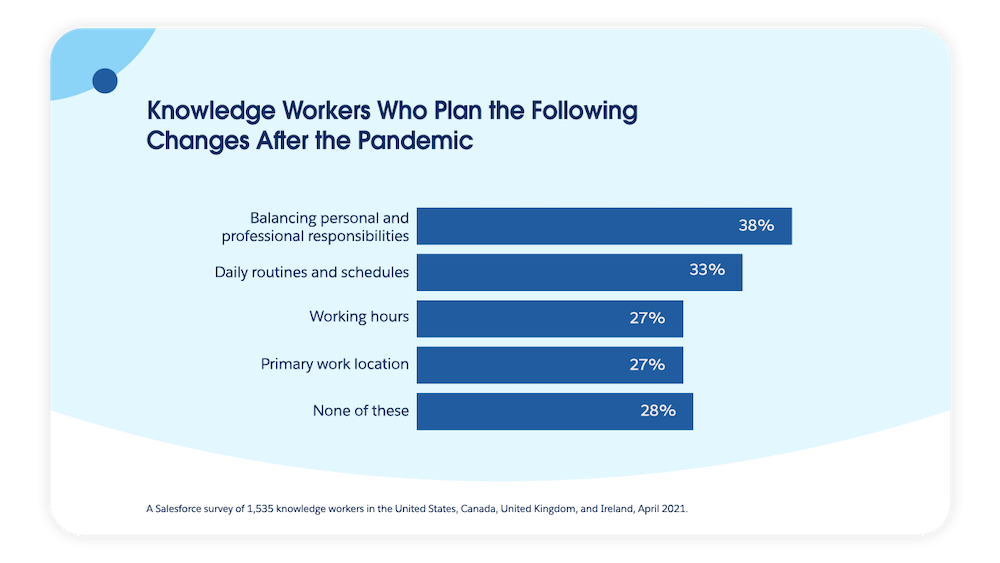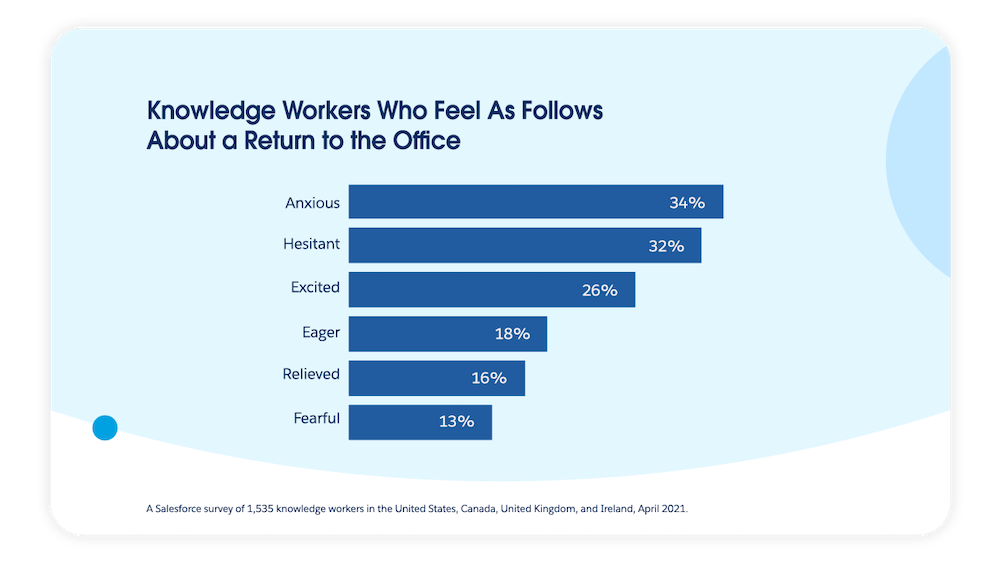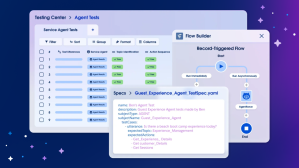Quick Take: Companies and employees alike expect flexible hybrid work arrangements when the pandemic ends. As workers ask themselves what they want their work lives to look like, it’s important for employers to take into account the unique needs of individuals.
As many countries inch closer to normalcy with declining COVID-19 case numbers and increased vaccination rates, the question for businesses and employees becomes: what is the future of work, and what will it look like? While the answer to that question is likely come more clearly into focus over the coming months and years, it’s become clear that the traditional norms are a thing of the past.
Salesforce surveyed over 1,500 knowledge workers* in the U.S., Canada, the U.K. and Ireland to gauge how they view the future of their work lives, and what they will need to navigate it. Here are the results.
Employees are reevaluating their relationship with work
Well over a year after many workers moved their offices into their homes — and after every facet of every life was upended — many employees are now reflecting on what they want their work lives to look like as the ongoing health crisis wanes.
Nearly three-quarters (72%) of knowledge workers say they’ll make or maintain at least one major change to their work lives after the pandemic has ended. Renewed balancing of personal and professional responsibilities tops the list of these changes, but significant numbers also plan to adjust their daily routines, working hours, and even their primary work locations.
These vows to change are loudest among the youngest workers. 88% of Gen Zers and 80% of millennials, for example, say they’ll make permanent adjustments to their work lives, compared to just 66% of Gen Xers and 51% of baby boomers.
Hybrid work arrangements viewed as a boon to employee wellbeing
At the same time workers are planning for change, companies are also reflecting on what the future of their workplaces will look like. For many businesses, flexible “hybrid” work arrangements, in which employees split their working hours between a traditional office and their homes or other remote locations, are being considered the default way forward.
Luckily, employees are largely on the same page regarding the benefits of such arrangements, with many seeing benefits for their psychological, physical, and professional health. This sentiment is especially prominent among millennials, who now constitute the largest share of the workforce.
A one-size-fits-all approach to hybrid work does not exist
Before issuing blanket policies dictating where and when their employees will work moving forward, employers must consider the impact that new work arrangements — hybrid, fully remote, or otherwise — will have on various segments of their workforce.
Case in point: baby boomers and Gen Z employees are not as enthusiastic about hybrid work arrangements as their colleagues. In fact, 57% of Gen Zers, many of whom may lack the space to effectively work at home for the long term, view the office as the best setting to support their wellbeing at work, and 54% say the same for productivity. Compare that to just 33% and 35% of millennials, respectively, who feel the same.
Differences in perceptions across regions may also impact companies’ strategies for post-pandemic work. For example, Canadian workers are particularly enthusiastic about the impact of hybrid work arrangements on their wellness and productivity.
Employers must prepare for the in-office aspect of hybrid work
The rising popularity of hybrid working arrangements has understandably focused on implications from the remote side of the equation, but the office will remain a pillar of company cultures across industries as a place for connection and collaboration. As more companies welcome workers back to offices on either a full- or part-time basis, they must be conscious of the mixed emotions that workers feel after months of public health warnings and precautions. It’s more important than ever that employers have the right technology, like Work.com, to help them manage a safe return.
The tactics employers can take to make employees feel more comfortable returning to their offices are as varied as the emotions those workers feel about the topic.
Enhanced cleaning and vaccination requirements will have the greatest overall impact on workers’ comfort. Yet just as there is no blanket approach to hybrid work for employees, there is no silver bullet for making office workers feel safe, and companies will need to pursue a variety of tactics to ensure all team members are comfortable and productive.
Learn more
Get insights on the spaces and technology that will power the future of work
Learn how Salesforce is approaching its global return to the office
And don’t miss two stories from Salesforce Blog on hybrid work strategies, found here, and here.
Survey methodology
Salesforce conducted a double-blind online survey of knowledge workers* in the United States, Canada, United Kingdom and Ireland. Data was collected between April 19 and April 22, 2021 and yielded 1,535 responses.
*Knowledge workers’ work is primarily mental labor (i.e, professional services, business management) over manual or task-based labor (i.e, construction, onsite manufacturing, warehouse operations, retail store service/operations, food service/operations).





















